How To Fall Snowboarding: Basics, Tips, & Safety Measures

Snowboarding is super fun once you get the hang of it, but starting out can be tough, especially when it comes to falling. If you’re like me when I first started, it can feel like you spend more time crashing than riding smoothly down the slopes.
Learning how to fall snowboarding is really important. It boosts your confidence on the board, helps you feel more at ease when you’re going fast, and keeps you and others safe on crowded slopes.
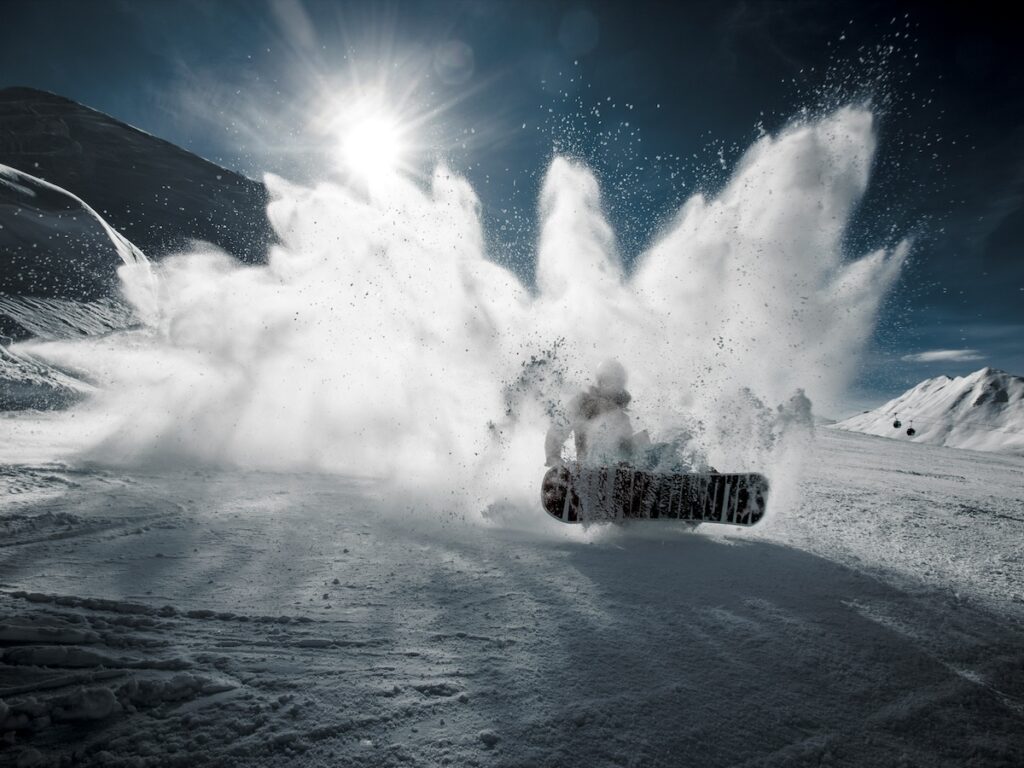
A Complete Guide To How To Fall Snowboarding
Here are some tips on how to fall safely while snowboarding. It’s important to note that, like many sports, snowboarding can be risky, so while these tips can be helpful, there’s still a chance of getting hurt but these tips can boost your confidence and hopefully keep you a bit safer while out on the slopes.
🏂🏼 Falling Frontwards Towards Your Stomach
When you fall forward while snowboarding, it’s one of the riskier situations because it can lead to various injuries. However, it’s something that often happens when you’re still learning to snowboard. Even after years of snowboarding, I still have forward and backward falls, it’s just part of the sport. But knowing how to fall safely can make a big difference.
Here’s a tip for falling forward: Keep your hands close to your body. Hands, especially wrists, can easily get hurt during a fall. While the instinct is to reach out with your hands to catch yourself, it’s better to keep them up and try to land on your forearms if you can.
In terms of your lower body, keeping your knees slightly bent helps absorb the impact. Letting your forearms and stomach take most of the shock can also help minimize injuries from the fall.
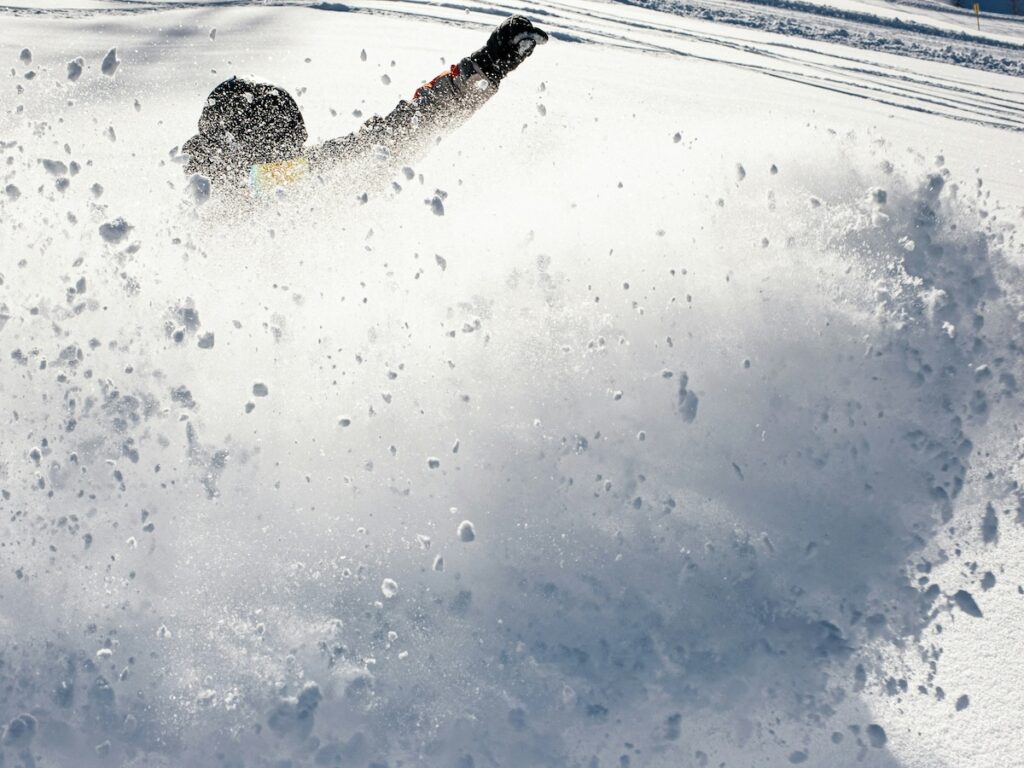
🏂🏼 Falling Backwards Towards Your Bottom
Falling backward while snowboarding can still be frightening and painful, but it’s often considered the safer way to fall. Similar to falling forward, you should avoid reaching out with your hands to catch yourself, as this can strain your hands and wrists and lead to injuries.
When falling backward, it’s important to keep your knees slightly bent, extend your back to ensure your butt or back makes contact with the ground first, and tuck your chin to reduce the impact on your head. Protecting your head is crucial, even with a good helmet, so taking care to minimize head injuries is super important.
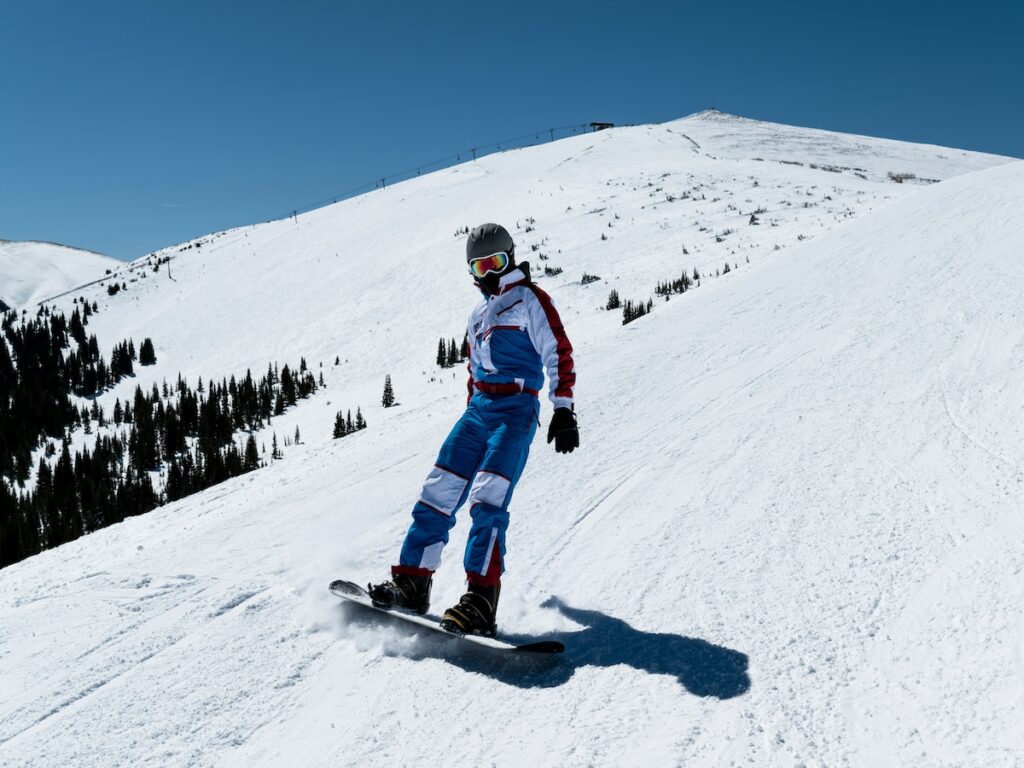
How To Avoid Injuries While Snowboarding
As with any physical activity, it’s important to follow best practices to avoid injuries. Below, I’ll share some essential tips for staying safe while snowboarding.
1. Do NOT Stick Your Hands Out
One of the most common mistakes beginners make while snowboarding is reaching out with their hands to break a fall. This can lead to wrist injuries, fractures, or even dislocations. It’s crucial to resist this instinct and focus on implementing the best practices and keep your whole body safe.
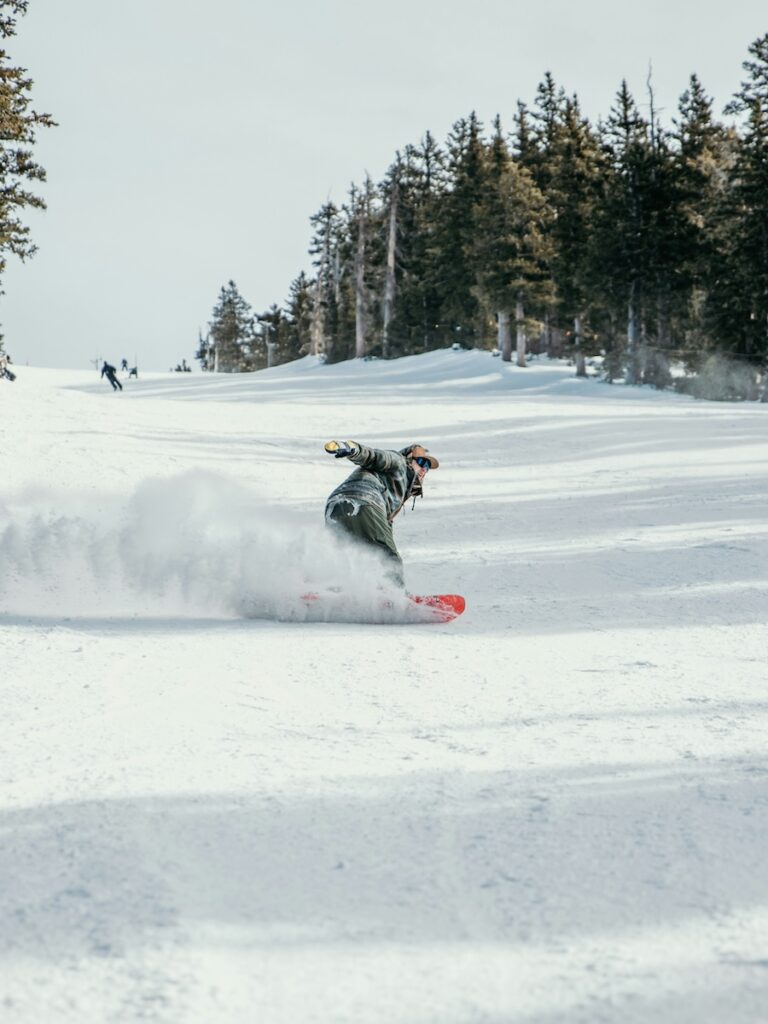
2. Consider Taking A Lesson
If you’re new to snowboarding or want to advance your skills, think about taking a lesson from a certified instructor. The instructor can help you with proper techniques, safety measures, and allow you to progress at a pace that suits your abilities, reducing the risk of injuries.
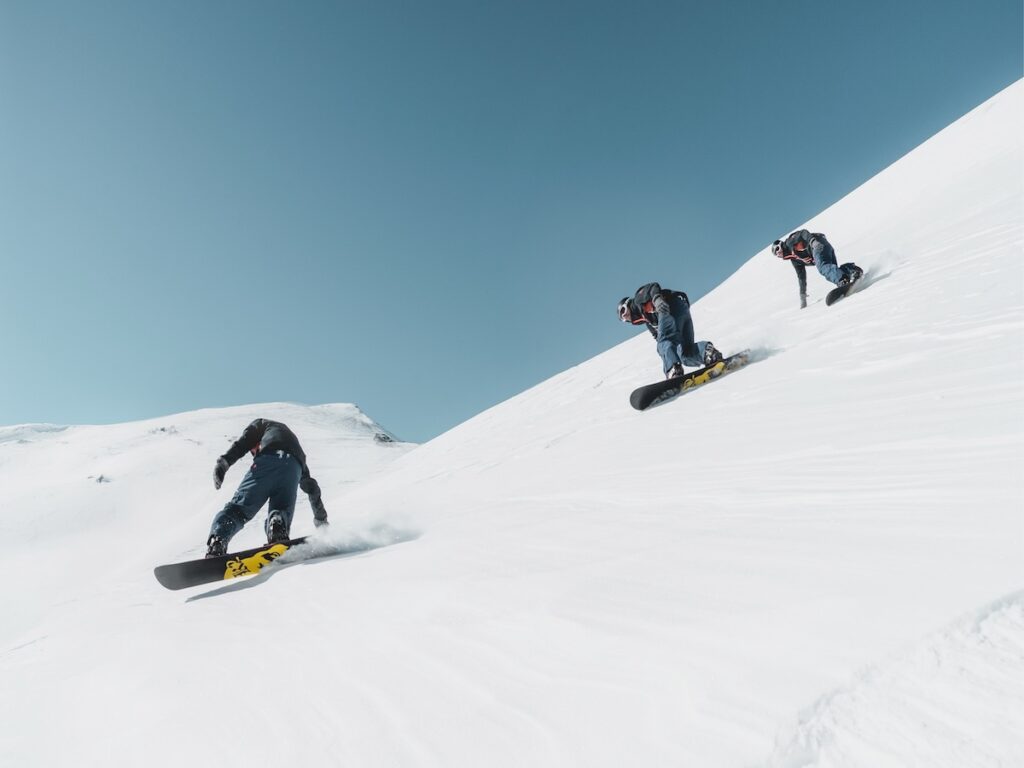
3. Stretch Before And After
Stretching before and after snowboarding sessions is essential for preventing muscle strains and injuries. Spend time stretching your legs, back muscles, and arms to improve flexibility and reduce the likelihood of strains or sprains.
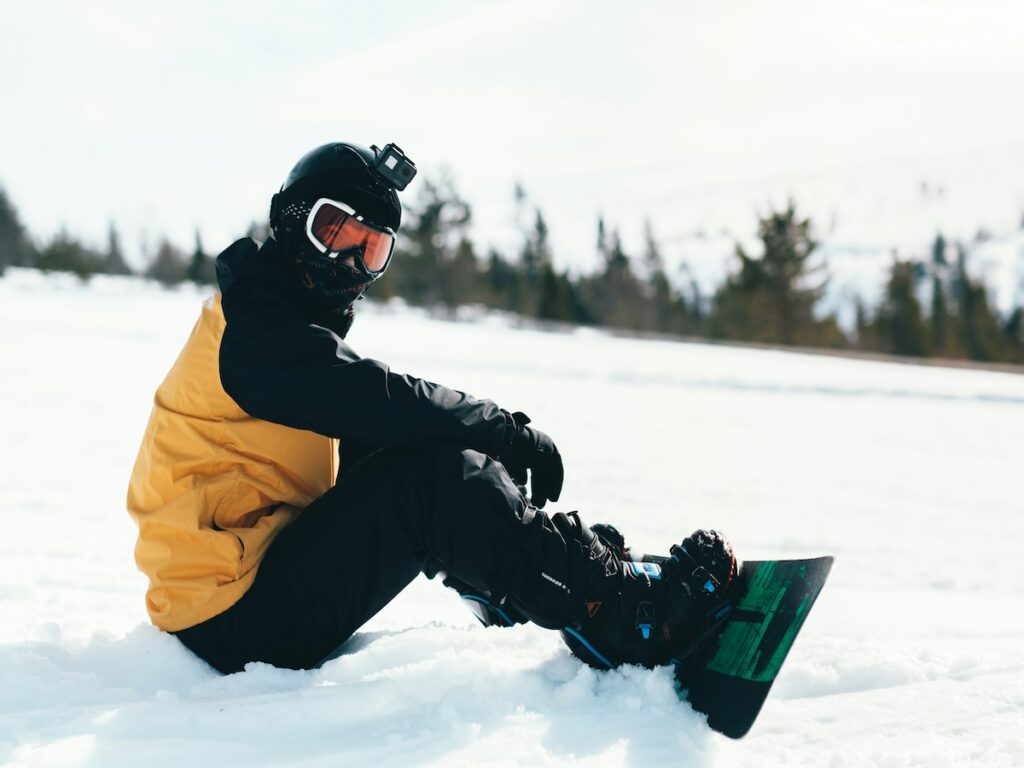
4. Know Your Skill Level
Be honest about your skill level and choose slopes that match your abilities. Pushing outside your limits can lead to accidents, collisions, and injuries. Start on easier runs and gradually progress as you become more confident and skilled.
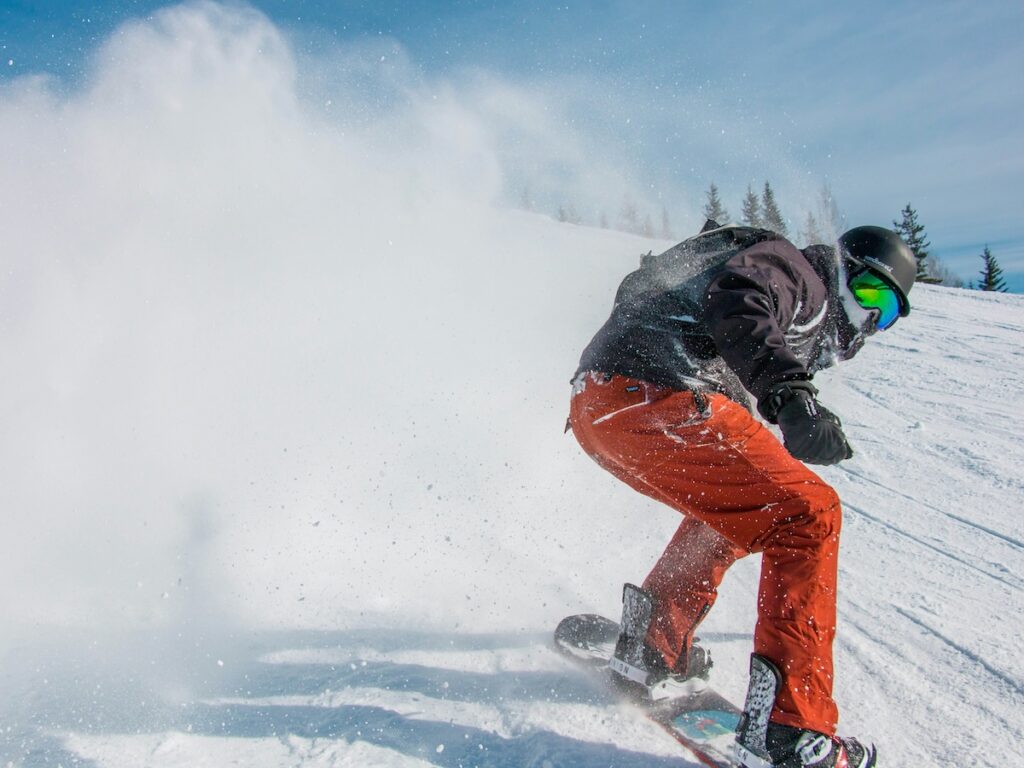
5. Think About Wearing Padded Shorts
Consider wearing padded shorts or impact shorts while snowboarding, especially if you’re prone to falling or are learning new tricks. These shorts provide extra cushioning and protection for your hips and tailbone, reducing the impact of falls.
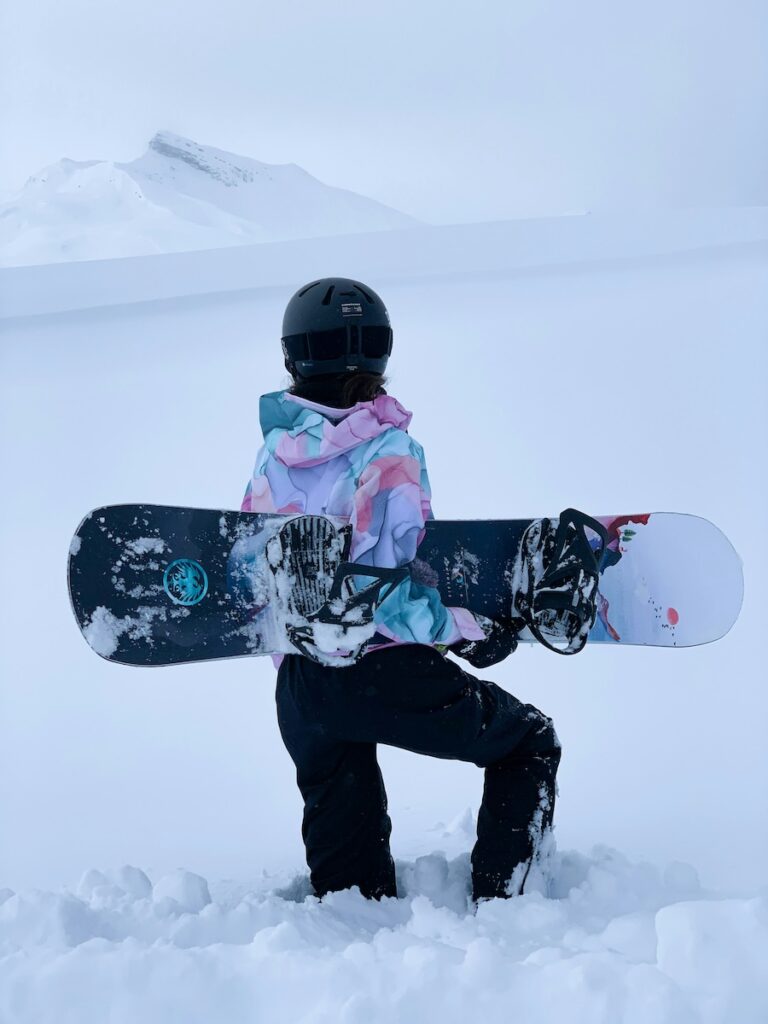
6. Stay On An Edge
When snowboarding, staying on an edge can help you keep control and reduce the risk of catching an edge and falling unexpectedly. Practice shifting your weight and balancing on your edges to navigate slopes safely.
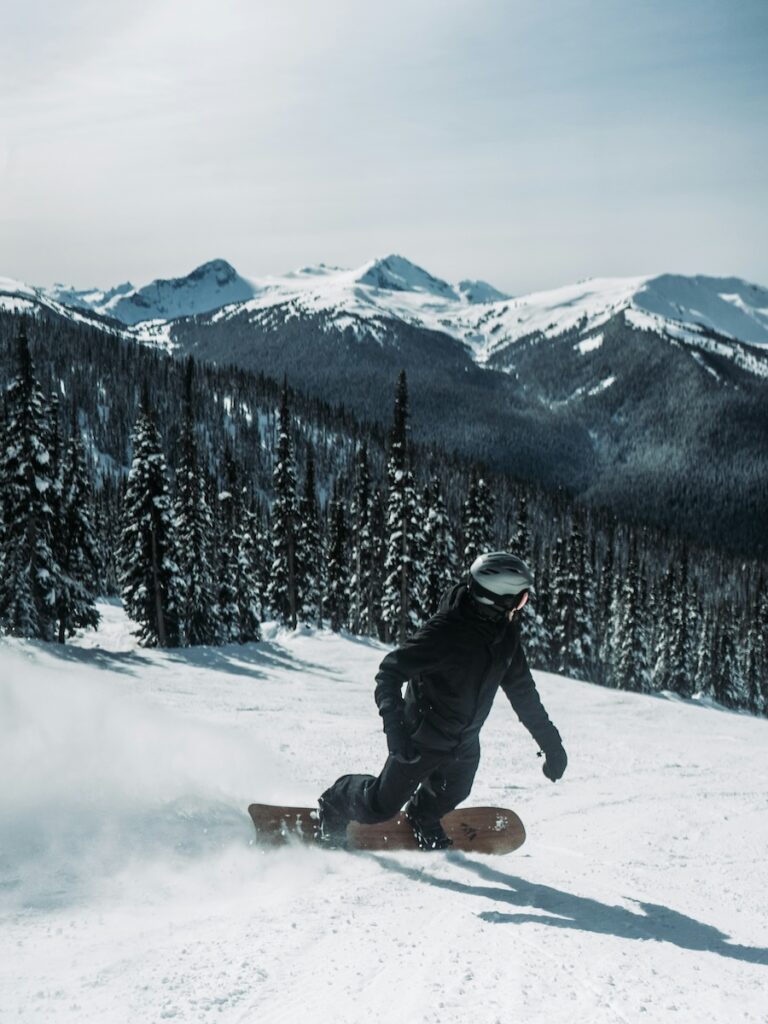
7. Wear A Helmet
Wearing a helmet is very important when it comes to snowboarding safety. It protects your head from impacts and reduces the risk of serious head injuries in case of falls or collisions. Make sure your helmet fits snug and is certified for snow sports.
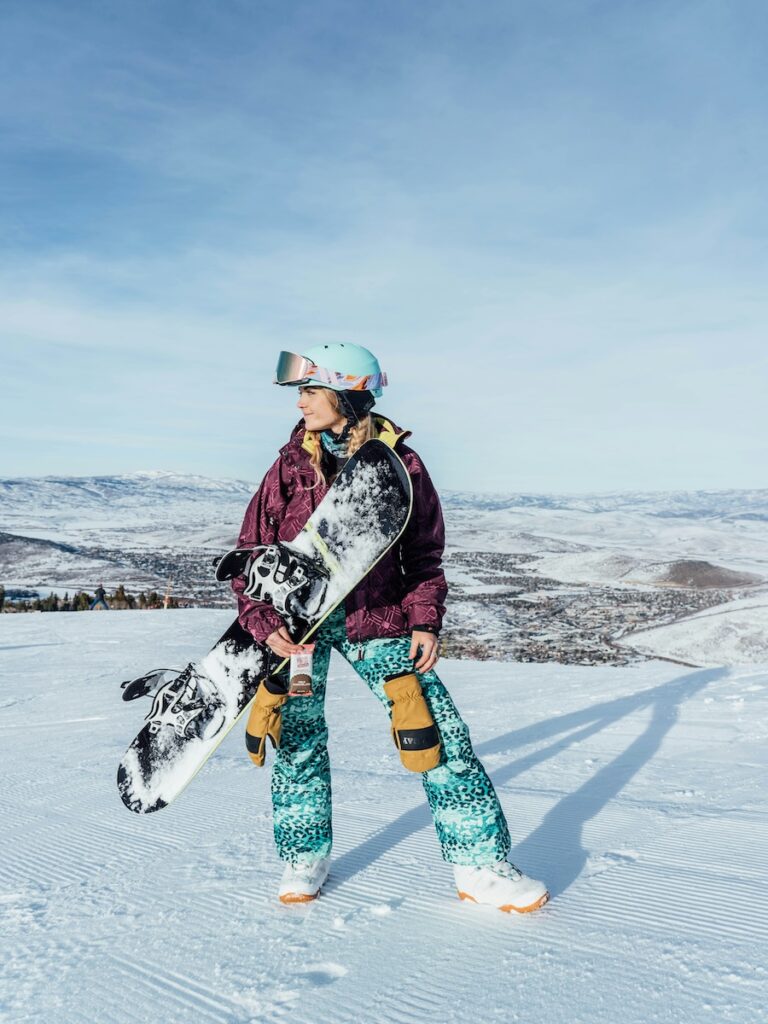
8. Don’t Stop In A Blind Spot On The Slope
Avoiding blind spots on the slope is crucial for safety while snowboarding. These spots, where visibility is limited, can pose significant risks for collisions with other riders. If you need to stop, especially on a busy slope, choose a visible and safe location off to the side where you can easily be seen by others
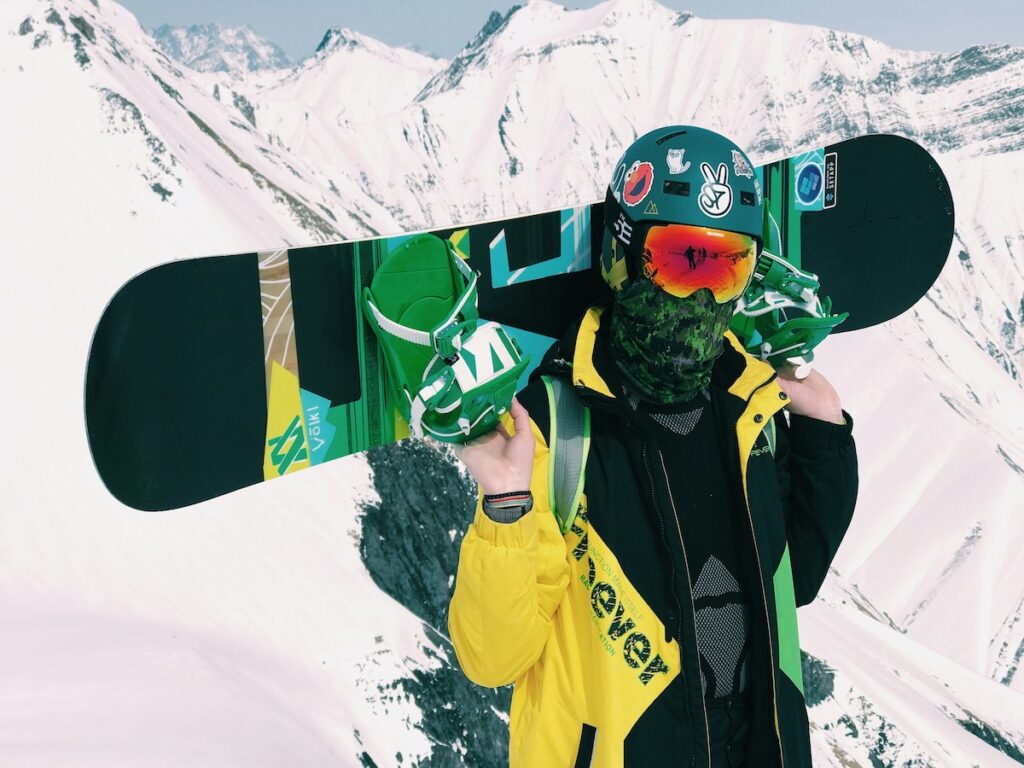
FAQs About How To Fall Snowboarding
Continue reading below as I answer a few frequently asked questions about how to fall safely while snowboarding.
How do I stop falling over snowboarding?
To stop falling over snowboarding you’ll want to practice keeping your weight centered, bending your knees, staying relaxed, and keeping your balance.
Practice is key to mastering snowboarding. Don’t hesitate to spend a full day in the learning area or on the bunny slopes, it’s where you build skills and gain confidence. Once you’ve mastered speed control and smooth turns, you’ll feel much more confident on the slopes.
How do you not hit your head when snowboarding?
The best way to not hit your head when snowboarding is by wearing a properly fitted helmet to protect your head during falls or crashes.
Additionally, practicing good form and avoiding risky maneuvers beyond your skill level can reduce the risk of head injuries.
Another key point is to tuck your head in when you do fall so that you body gets most of the impact and not your head.
How do you not hurt yourself snowboarding?
Wearing protective gear, practicing proper snowboarding techniques, and listening to your body is how you don’t hurt yourself snowboarding.
You will fall while mastering the sport so my top recommendation is investing in good gear like a quality helmet, top notch gloves, the best snowboard boots, and padded shorts. Besides gear, the best way to not get hurt snowboarding is to practice and implement best practices when you do fall so that you don’t get injured.
How do you build balance for snowboarding?
Building balance for snowboarding requires practice and specific exercises. Work on strengthening your core muscles, improving your posture, and practicing balance drills both on and off the board. Some exercises that are helpful at home include yoga, pilates, and balance board training.
How do you stay balanced on a snowboard?
To stay balanced on a snowboard, focus on keeping your weight centered over the board. Keep your knees bent, engage your core muscles, and use subtle movements to adjust your balance as needed. Practice shifting your weight between your toes and heels to maintain control and stability.
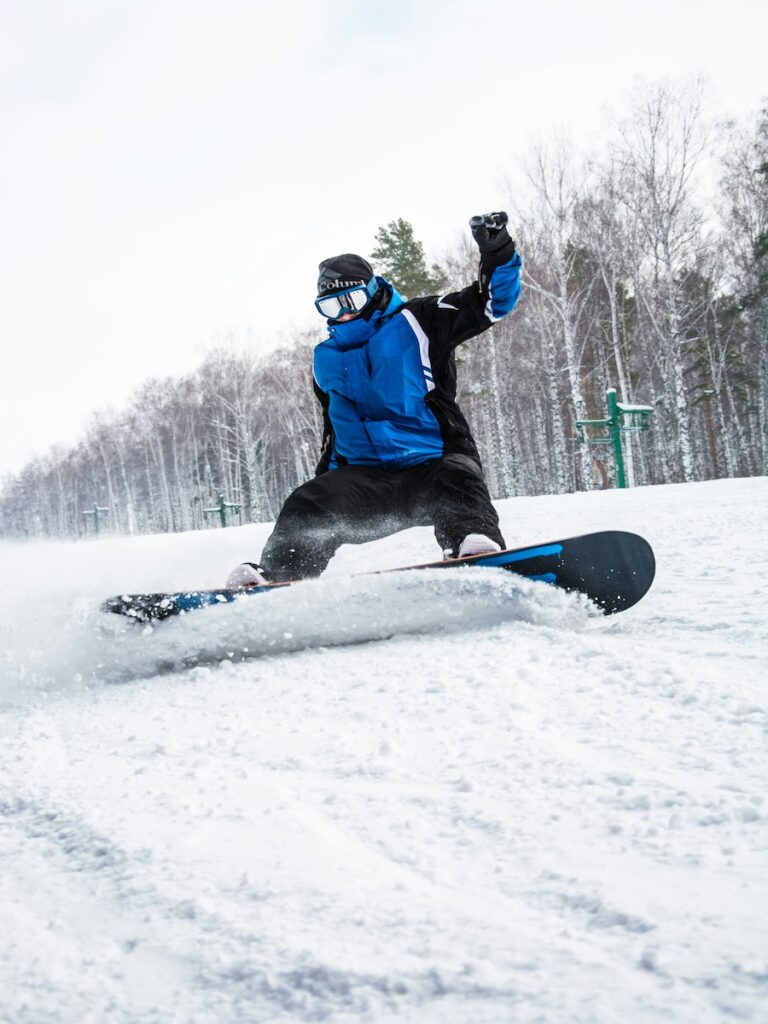
Final Thoughts On How To Fall Snowboarding
Understanding how to fall safely while snowboarding is incredibly beneficial, especially for beginners hitting the slopes. Fear of falling is common, and I experienced it myself when starting out. However, mastering the basics brings a sense of ease.
By following these tips and adopting good snowboarding habits, you can reduce the risk of injuries and have a safer and more enjoyable time on the slopes.